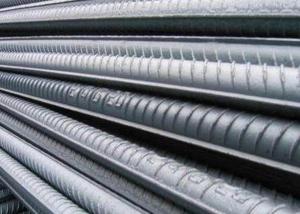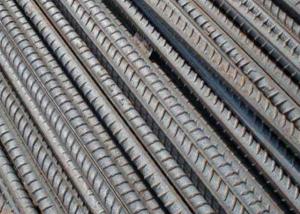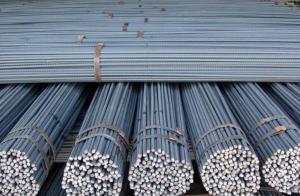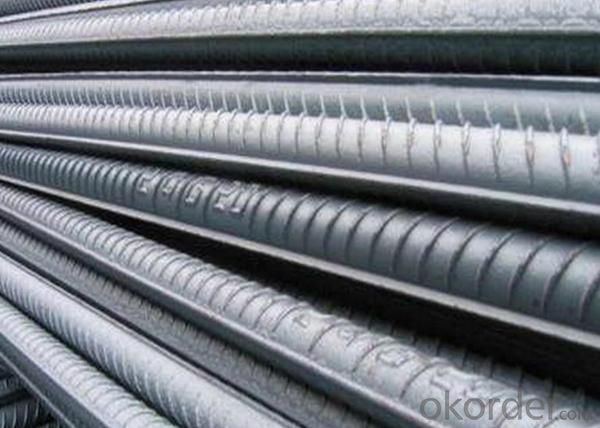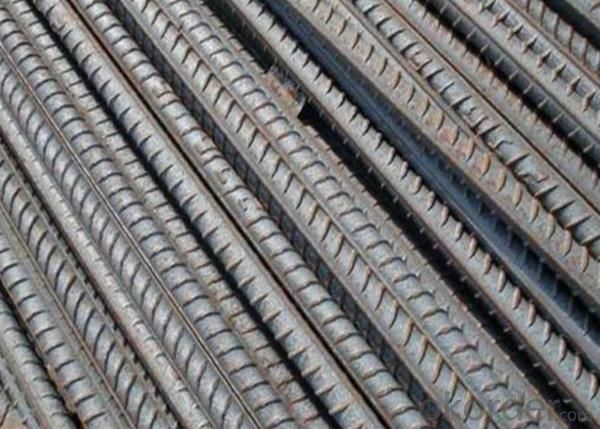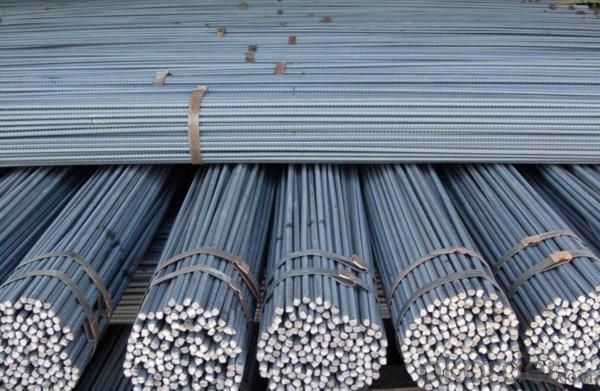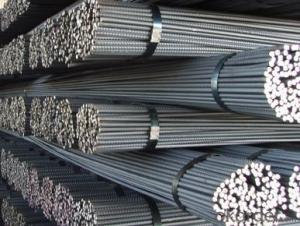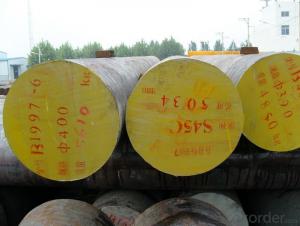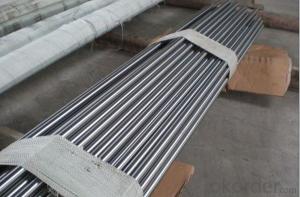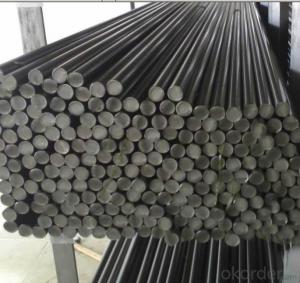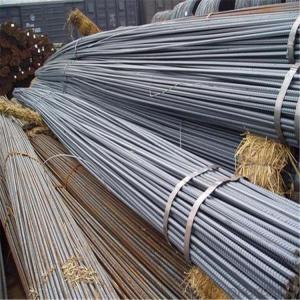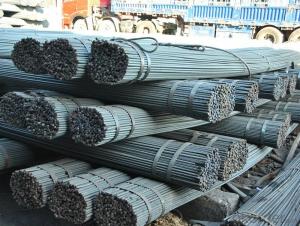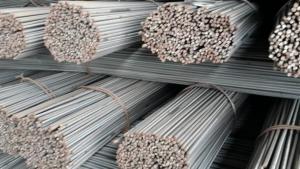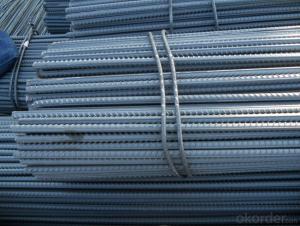HRB400 Deformed Steel Bar
- Loading Port:
- China Main Port
- Payment Terms:
- TT or LC
- Min Order Qty:
- 25MT m.t.
- Supply Capability:
- 800000TONS/YEAR m.t./month
OKorder Service Pledge
OKorder Financial Service
You Might Also Like
Specifications of HRB400 Deformed Steel Bar:
Standard | GB | HRB400 | |
Diameter | 6mm,8mm,10mm,12mm,14mm,16mm,18mm,20mm, 22mm,25mm,28mm,32mm,36mm,40mm,50mm | ||
Length | 6M, 9M,12M or as required | ||
Place of origin | Hebei, China mainland | ||
Advantages | exact size, regular package, chemical and mechanical properties are stable. | ||
Type | Hot rolled deformed steel bar | ||
Brand name | DRAGON | ||
Chemical Composition: (Please kindly find our chemistry of our material based on HRB500 as below for your information)
Grade | Technical data of the original chemical composition (%) | ||||||
C | Mn | Si | S | P | V | ||
HRB400 | ≤0.25 | ≤1.60 | ≤0.80 | ≤0.045 | ≤0.045 | 0.04-0.12 | |
Physical capability | |||||||
Yield Strength (N/cm²) | Tensile Strength (N/cm²) | Elongation (%) | |||||
≥400 | ≥570 | ≥14 | |||||
Theoretical weight and section area of each diameter as below for your information:
Diameter(mm) | Section area (mm²) | Mass(kg/m) | Weight of 12m bar(kg) |
6 | 28.27 | 0.222 | 2.664 |
8 | 50.27 | 0.395 | 4.74 |
10 | 78.54 | 0.617 | 7.404 |
12 | 113.1 | 0.888 | 10.656 |
14 | 153.9 | 1.21 | 14.52 |
16 | 201.1 | 1.58 | 18.96 |
18 | 254.5 | 2.00 | 24 |
20 | 314.2 | 2.47 | 29.64 |
22 | 380.1 | 2.98 | 35.76 |
25 | 490.9 | 3.85 | 46.2 |
28 | 615.8 | 4.83 | 57.96 |
32 | 804.2 | 6.31 | 75.72 |
36 | 1018 | 7.99 | 98.88 |
40 | 1257 | 9.87 | 118.44 |
50 | 1964 | 15.42 | 185.04 |
Usage and Applications of HRB400 Deformed Steel Bar:
Deformed bar is widely used in buildings, bridges, roads and other engineering construction. Big to highways, railways, bridges, culverts, tunnels, public facilities such as flood control, dam, small to housing construction, beam, column, wall and the foundation of the plate, deformed bar is an integral structure material. With the development of world economy and the vigorous development of infrastructure construction, real estate, the demand for deformed bar will be larger and larger..
Packaging & Delivery of HRB400 Deformed Steel Bar:
Packaging Detail: products are packed in bundle and then shipped by container or bulk vessel, deformed bar is usually naked strapping delivery, when storing, please pay attention to moisture proof. The performance of rust will produce adverse effect.
Each bundle weight: 2-3MT, or as required
Payment term: TT or L/C
Delivery Detail: within 45 days after received advanced payment or LC.
Label: to be specified by customer, generally, each bundle has 1-2 labels
Trade terms: FOB, CFR, CIF
Deformed Steel Bar in container
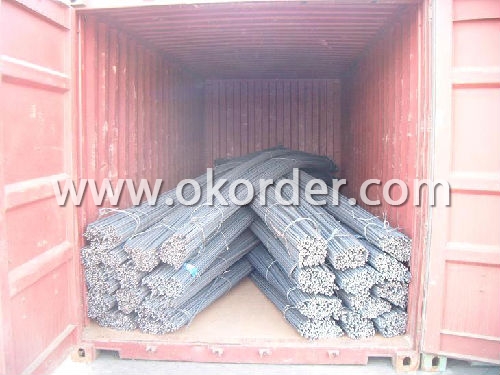
Deformed Steel Bar in factory
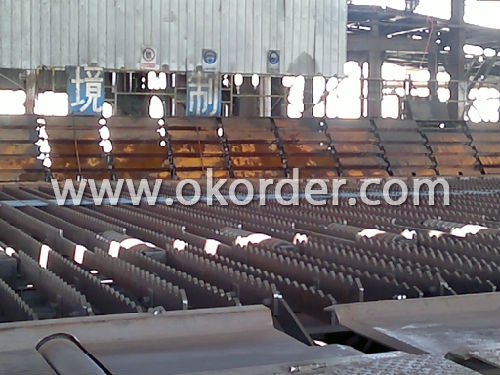
Note:
1. Our products are produced according to national standard (GB), if not, supply according to national standards (GB) or agreement as customer required.
2. Other Grade and Standard Deformed Steel Bar we can supply:
Grade: GR40/GR60, G460B/B500A/B500B/B500C,BST500S
Standard: ASTM, BS, DIN
The Minimum Order Quantity of these products is high, and need to be confirmed.
3. We can not only supply Deformed Steel Bar; if you need anything about building materials, please contact us for further information.
4. Please send us your detail specifications when inquire. We will reply to you as soon as possible. We sincerely hope we can establish a long stable business relationship.
- Q: What are the listed companies that produce wire rod and thread steel?
- The wire in iron and steel usually refers to a coil of wire material with a diameter of 5.5-14. Most of the use of wire coil machine rolled coil supply, it is also known as wire rod or coil. Wire rod is one of the varieties of steel with great dosage. After rolling, it can be directly used for reinforcement and welding structure of reinforced soil, and can also be used again and again. For example, by drawing into a variety of specifications of steel wire, steel wire rope, and then twisted into woven steel wire and winding and heat treatment to the spring; hot and cold forged into cold forging and rolling into rivets and bolts, screws and so on; by cutting into the heat treatment made of mechanical parts or tools; a common wire made of quality carbon steel and carbon steel.
- Q: What is the typical weight of a steel rebar?
- The typical weight of a steel rebar varies depending on its size and length. However, a commonly used steel rebar, such as a #4 rebar, typically weighs around 9.5 pounds per foot or 14.2 kilograms per meter.
- Q: What are the advantages of using fiber-reinforced polymer (FRP) rebars over steel rebars?
- There are several advantages of using fiber-reinforced polymer (FRP) rebars over steel rebars. Firstly, FRP rebars are significantly lighter than steel rebars, making them easier to handle and transport. Additionally, FRP rebars have a higher tensile strength than steel rebars, allowing for greater flexibility in design and reducing the need for additional reinforcement. FRP rebars are also non-corrosive, unlike steel rebars which can rust over time, making them more durable and longer-lasting. Lastly, FRP rebars are non-conductive, making them suitable for use in areas with electrical or magnetic fields. Overall, the use of FRP rebars offers numerous advantages in terms of weight, strength, durability, and versatility.
- Q: High strength thread steel hrb400e 32 in diameter, is it special steel?
- According to the use of special steel, can be divided into high quality carbon steel, alloy steel, carbon tool steel, alloy tool (die) with steel, high-speed tool steel, bearing steel, spring steel (carbon spring steel and alloy spring steel), stainless steel (heat, acid) eight.
- Q: How do steel rebars impact the overall cost of a construction project?
- The overall cost of a construction project can be greatly influenced by steel rebars. To begin with, the price of steel rebars themselves can be quite substantial, especially if large quantities are needed. Various factors such as market demand, availability, and fluctuations in raw material prices can affect the prices of steel rebars. Additionally, the installation of steel rebars incurs extra expenses, including labor, tools, and equipment. Skilled workers are necessary to accurately position the rebars according to the construction plans, which can raise labor costs. Moreover, specialized tools and equipment are required to cut, bend, and tie the rebars, increasing the project's expenses. The use of steel rebars also impacts the construction timeline, which in turn affects the project's cost. Construction projects often have strict deadlines, and any delays in the delivery or installation of rebars can result in additional expenses due to increased labor costs, idle equipment, and potential penalties for late completion. Furthermore, steel rebars play a vital role in providing structural strength and durability to the building. By reinforcing concrete structures, steel rebars enhance their ability to bear loads and resist forces such as earthquakes and extreme weather conditions. This reduces the risk of structural failures and the need for expensive repairs or replacements in the future. In conclusion, steel rebars have a significant impact on the overall cost of a construction project due to their purchase cost, installation expenses, effect on the construction timeline, and long-term benefits in terms of structural integrity and durability. Proper planning, procurement, and installation of steel rebars are crucial for effectively managing costs and ensuring the successful completion of the project within the allocated budget.
- Q: Can steel rebars be used in the construction of railway or subway systems?
- Steel rebars, also known as reinforcement bars, serve as a reliable and commonly used material in the construction of railway or subway systems. They provide strength and durability to concrete structures, ensuring the safety and longevity of the infrastructure. Typically, steel rebars reinforce the concrete foundations, pillars, beams, and other structural components of railway or subway systems. This reinforcement enhances the structural integrity and load-bearing capacity of the infrastructure. Moreover, steel rebars possess corrosion-resistant properties, making them suitable for environments with moisture or chemical exposure. Overall, steel rebars play a crucial role in constructing railway or subway systems, ensuring their strength, durability, and safety.
- Q: Can steel rebars be welded?
- Yes, steel rebars can be welded. Welding is a common method used to join steel rebars to create reinforced concrete structures.
- Q: Can steel rebars be used in high-strength concrete?
- Yes, steel rebars can be used in high-strength concrete. In fact, steel rebars are commonly used to reinforce concrete structures, regardless of the concrete strength. High-strength concrete refers to concrete that has a compressive strength significantly higher than conventional concrete. It typically has a compressive strength of 6,000 psi (pounds per square inch) or more. Steel rebars are essential in high-strength concrete to provide the necessary tensile strength. While concrete has excellent compressive strength, it is relatively weak in tension. By incorporating steel rebars into the concrete, the composite material becomes stronger and more durable. The rebars act as reinforcement, resisting the tensile forces and preventing cracks or failure in the structure. However, it is important to note that the selection of the appropriate steel rebar for high-strength concrete is crucial. The rebars used should have sufficient strength and ductility to withstand the higher stresses and strains associated with high-strength concrete. Additionally, proper placement, spacing, and anchorage of the rebars are essential to ensure effective reinforcement and optimal performance of the concrete structure. In summary, steel rebars can definitely be used in high-strength concrete to enhance its tensile strength and overall structural integrity.
- Q: How do steel rebars distribute loads in concrete structures?
- Steel rebars distribute loads in concrete structures by providing reinforcement and increasing the tensile strength of the concrete. The rebars are typically placed in the concrete in a grid-like pattern, creating a network of support throughout the structure. When the concrete is subjected to external loads, such as the weight of the building or the force of an earthquake, the rebars help distribute the load more evenly across the structure. This prevents the concrete from cracking or failing under the stress. Rebars work by transferring the tensile forces to the surrounding concrete. While concrete is strong in compression, it is relatively weak in tension. The rebars act as a reinforcement, resisting the tensile forces and preventing the concrete from cracking. When a load is applied to the structure, the rebars bear a portion of the load and distribute it to adjacent rebars and the surrounding concrete, effectively increasing the overall strength and stability of the structure. The distribution of loads in concrete structures is also influenced by the spacing and diameter of the rebars. Properly spacing the rebars ensures that the load is evenly distributed, minimizing the risk of localized stress concentration. The diameter of the rebars also plays a role in load distribution, as larger diameter rebars can withstand higher loads and provide more reinforcement. In addition to load distribution, steel rebars also help control the propagation of cracks within the concrete. When cracks do occur, the rebars help prevent them from spreading by transferring the stress around the cracked area and maintaining the structural integrity of the concrete. Overall, steel rebars play a critical role in distributing loads in concrete structures by providing reinforcement, increasing tensile strength, and controlling crack propagation. Their strategic placement and proper sizing ensure that the loads are evenly distributed, enhancing the durability and longevity of the structure.
- Q: What are the different methods of protecting steel rebars against corrosion?
- There are multiple methods available for safeguarding steel rebars from corrosion, which can be broadly categorized into passive and active protection. Passive protection methods involve using barrier coatings or inhibitors to prevent corrosive agents from reaching the surface of the steel rebars. One commonly used technique is applying epoxy coatings, which create a physical barrier between the rebar and its surrounding environment. These coatings can be administered through spraying, brushing, or immersion, and offer excellent corrosion protection. Another passive protection method is utilizing zinc-based coatings like galvanization or zinc-rich paints. These coatings provide sacrificial protection, where the zinc layer corrodes first, thereby shielding the steel rebar from corrosive elements. Galvanization, a widely adopted technique, involves immersing the rebar in molten zinc to form a protective layer. In addition to barrier coatings, inhibitors can also be employed to protect steel rebars. Inhibitors work by reducing the corrosive activity of the surrounding environment. Common inhibitors include calcium nitrite, which forms a protective layer on the rebar's surface, and organic compounds such as amines and phosphates, which passivate the steel and decrease corrosion rates. Active protection methods involve using impressed current cathodic protection (ICCP) or galvanic anodes. ICCP entails applying a direct electrical current to the steel rebar, counteracting the corrosive forces. This technique necessitates the installation of anodes and a power supply system. On the other hand, galvanic anodes are sacrificial metals like aluminum or magnesium that are connected to the steel rebar. The anode corrodes instead of the rebar, offering protection. It is important to consider various factors, including the environment, exposure conditions, and project requirements, when selecting a protection method. Consulting corrosion experts or engineers is often recommended to determine the most suitable method for safeguarding steel rebars from corrosion in a specific situation.
1. Manufacturer Overview
| Location | Hebei, China |
| Year Established | 2009 |
| Annual Output Value | Above US$ 500 Million |
| Main Markets | Southeast Asia; East Asia; Middle east |
| Company Certifications | ISO 9001:2008 |
2. Manufacturer Certificates
| a) Certification Name | |
| Range | |
| Reference | |
| Validity Period |
3. Manufacturer Capability
| a) Trade Capacity | |
| Nearest Port | Tianjin; |
| Export Percentage | 40%-60% |
| No.of Employees in Trade Department | 21-60 People |
| Language Spoken: | English; Chinese |
| b) Factory Information | |
| Factory Size: | Above 850,000 square meters |
| No. of Production Lines | Above 5 |
| Contract Manufacturing | OEM service offered |
| Product Price Range | high; average |
Send your message to us
HRB400 Deformed Steel Bar
- Loading Port:
- China Main Port
- Payment Terms:
- TT or LC
- Min Order Qty:
- 25MT m.t.
- Supply Capability:
- 800000TONS/YEAR m.t./month
OKorder Service Pledge
OKorder Financial Service
Similar products
Hot products
Hot Searches
Related keywords
